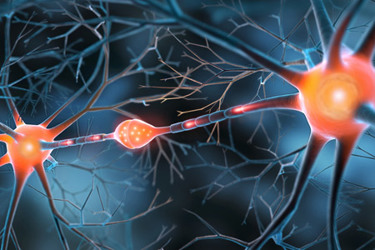Promising Clinical Trial Updates Shared At The American Academy Of Neurology Conference
By Maria Gonzalez-Gancedo, Elvira Mukharryamova, and Ivo Carre, Lifescience Dynamics

The 2025 American Academy of Neurology (AAN) conference in early April gathered neurologists, researchers, and industry professionals from across the globe, showcasing cutting-edge research, clinical advances, and emerging treatments across neurological disorders. While there were many anticipated updates at this year’s conference, some notable highlights include the following.
Advances In Guillain-Barre Syndrome (GBS) And Huntington’s Disease
Guillain-Barre syndrome, a rare autoimmune disorder caused by the immune system attacking the peripheral nervous system, remains a difficult-to-treat disease. Current treatments include intravenous immunoglobulin (IVIG) and plasma exchange (often every other day over seven to 14 days). With variable responses to treatment and ~30% of patients experiencing long-term disability, there remains a significant unmet need for effective treatments. Annexon’s ANX005, a monoclonal antibody targeting the complement-associated protein complex C1q, represents a new approach to managing GBS, offering an upstream disease-modifying therapy that may prevent axonal injury if dosed early enough. At AAN, new insights were presented from ANX005’s Phase 3 trial, with data indicating a single 30 mg/kg dose showed a 2.4-fold higher likelihood of improved health at Week 8 and independent walking a median of 31 days earlier versus placebo, suggesting a significant slowing of disease progression. This data, along with ongoing discussions with the FDA, is expected to lead to a BLA filing later in 2025.
Beyond GBS, the results also position ANX005 and complement inhibition as a viable treatment strategy for other neurodegenerative diseases, including Huntington’s disease. It is hypothesized that by protecting synapses, ANX005 treatment may help slow disease progression if given at early/intermediate stages, which again remains a condition of high unmet need.
Therapeutic Advances In CIDP: Efgartigimod And Riliprubart Poised For Disruption
Chronic inflammatory demyelinating polyneuropathy (CIDP), a rare immune-mediated disorder of the peripheral nervous system characterized by progressive weakness and sensory loss, remains a condition of high unmet need due to limited treatment options and the burden of those available. While standard therapies such as IVIG and corticosteroids are widely used, treatment burden and variable response have driven interest in targeted disease-modifying approaches. Two such therapies included argenx’s efgartigimod and Sanofi’s riliprubart, both of which featured prominently at AAN 2025.
Efgartigimod, an FcRn inhibitor, was the subject of multiple presentations based on recent data sets. Data from the Phase 3 ADHERE study pointed to meaningful improvement in disability scores, grip strength, and daily activities. The open-label extension study (ADHERE+) showed that 50% of patients who deteriorated during ADHERE successfully restabilized with subcutaneous dosing of efgartigimod as early as Week 4. Industry sessions throughout the conference also explored the impact of FcRn blockade on CIDP and provided forums for discussion on efgartigimod in clinical practice.
Sanofi’s riliprubart, a first-in-class classical complement C1s protease inhibitor, also was in focus with key Phase 3 trial updates from the MOBILIZE and VITALIZE trials that demonstrated its potential for patients with residual disability or refractory CIDP. This built on Phase 2 data that showed notable efficacy in stabilizing disease progression and improving functional outcomes.
Together, these data are likely to shape future treatment strategies in CIDP, potentially reducing reliance on IVIG and advancing more targeted durable disease control.
Emerging Therapies In ALS
Following the discontinuation and failure of several assets in ALS, including Relyvrio and fosigotifator, ALS has remained a disease with a severe lack of treatment options. Several key presentations at AAN provided promising updates within the ALS space, including new insights into pridopidine from Prilenia Therapeutics and PrimeC from NeuroSense Therapeutics. Pridopidine, which is thought to work by protecting nerve cells from stress-related damage, was featured in a subgroup analysis from the Phase 2 HEALEY ALS Platform Trial in early ALS. While the trial missed its primary endpoint, the subgroup analysis suggested a 32% slowing of functional decline and associated improvements in breathing, speech, and quality of life, along with early signs of extended survival. Investigators highlighted a potential early “therapeutic window” in which the disease trajectory could be altered.
NeuroSense’s PrimeC, an oral combination of ciprofloxacin and celecoxib, also presented data from its Phase 2b PARADIGM trial. Data suggested a 36% slowing of disease progression at 12 months, along with favorable biomarker changes, underscoring PrimeC’s potential as a disease-modifying therapy.
Together, these presentations underscored the growing momentum in the ALS pipeline. While not positioned as curative, they may offer benefits that improve and extend patients' quality of life.
Overall, the momentum seen at AAN 2025 underscores the value of precision-targeted, disease-modifying therapies across neuroimmune and neurodegenerative disorders. For companies entering or expanding in the neurology space, early-stage intervention strategies, biomarker-guided development, and patient-centered outcome measures will be key to gaining clinical and regulatory traction. Continued collaboration with academic and patient communities will also be critical to navigate unmet needs and accelerate innovation.
About The Authors:
 Maria Gonzalez-Gancedo, MRes, is a business analyst at Lifescience Dynamics.
Maria Gonzalez-Gancedo, MRes, is a business analyst at Lifescience Dynamics.
 Elvira Mukharryamova, MHSc, is a business analyst at Lifescience Dynamics.
Elvira Mukharryamova, MHSc, is a business analyst at Lifescience Dynamics.
 Ivo Carre, Ph.D., is a senior business analyst at Lifescience Dynamics.
Ivo Carre, Ph.D., is a senior business analyst at Lifescience Dynamics.
